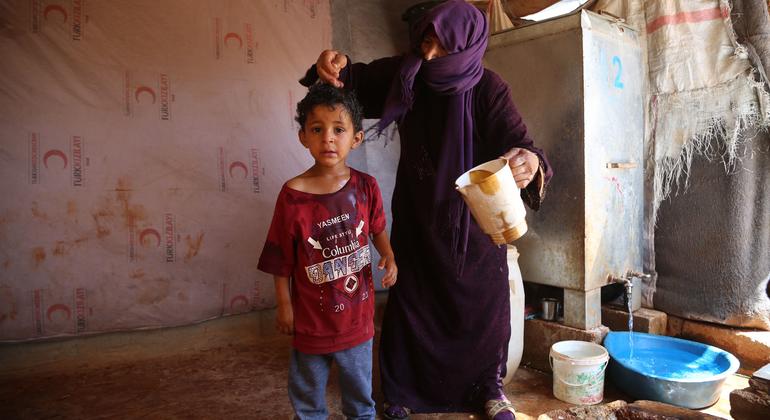[ad_1]
“Extreme heat is increasing, disrupting children’s health, well-being and daily routines,” said UNICEF Executive Director Catherine Russell.
The study compared averages in the 1960s with the period 2020-2024, measuring the days which exceeded 35 degrees Celsius (95 degrees Fahrenheit).
It presents a stark warning over the speed and scale at which such days are increasing for almost half a billion children worldwide – many without the infrastructure or services to endure it.
Country-level findings
In examining country-level data, the analysis also found that in 16 countries, children now experience more than a month of additional extremely hot days compared with six decades ago.
In South Sudan, for example, children are living through a yearly average of 165 extremely hot days this decade, compared to 110 days in the 1960s, while in Paraguay it has jumped to 71 days from 36.
Globally, children in West and Central Africa face the highest exposure to extremely hot days and the most significant increases over time, according to the analysis. 123 million children – or 39 per cent of children in the region – now experience an average of more than one third of the year – or at least 95 days – in temperatures above 35°C, reaching as many as 212 days in Mali, 202 days in Niger, 198 days in Senegal, and 195 days in Sudan.
In Latin America and the Caribbean, almost 48 million children live in areas that are experiencing twice the number of extremely hot days.
‘Children are not little adults’
Heat stress within the body, caused by exposure to extreme heat, poses unique threats to the health of children.
Excess levels of heat stress contribute to child malnutrition, non-communicable diseases such as heat-related illnesses, and leave children more vulnerable to infectious diseases that spread in high temperatures, such as malaria and dengue.
Evidence also shows that neurodevelopment, mental health, and overall well-being are being impacted.
“Children are not little adults. Their bodies are far more vulnerable to extreme heat. Young bodies heat up faster, and cool down more slowly. Extreme heat is especially risky for babies due to their faster heart rate, so rising temperatures are even more alarming for children,” Ms. Russell said.
The impact of climate-related hazards on child health is exacerbated by how such hazards affect food and water security, damage infrastructure, disrupt services for children, and drive displacement.
Pregnant women are also particularly vulnerable to the effects of extreme heat. Heat stress has been linked to pregnancy complications such as gestational chronic diseases and adverse birth outcomes including stillbirth, low birth weight, and preterm birth.
New national climate plans
In the coming months, all countries committed to the Paris Agreement on climate change will submit new national climate plans which will set the course of climate action for a decade. They are a time bound opportunity to set out concrete plans to realise the goals of the Paris agreement.
UNICEF is calling on leaders, governments and the private sector to seize this opportunity to deliver urgent and bold climate action which upholds the right of every child to a clean, healthy and sustainable environment.
“As governments are currently drafting their national climate action plans, they can do so with the ambition and knowledge that today’s children and future generations will have to live in the world they leave behind,” Ms. Russell added.
[ad_2]
Source link

Leave a Reply